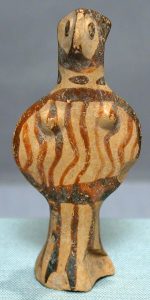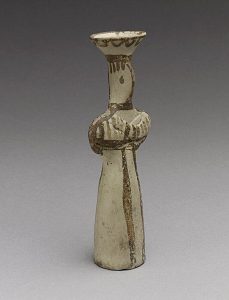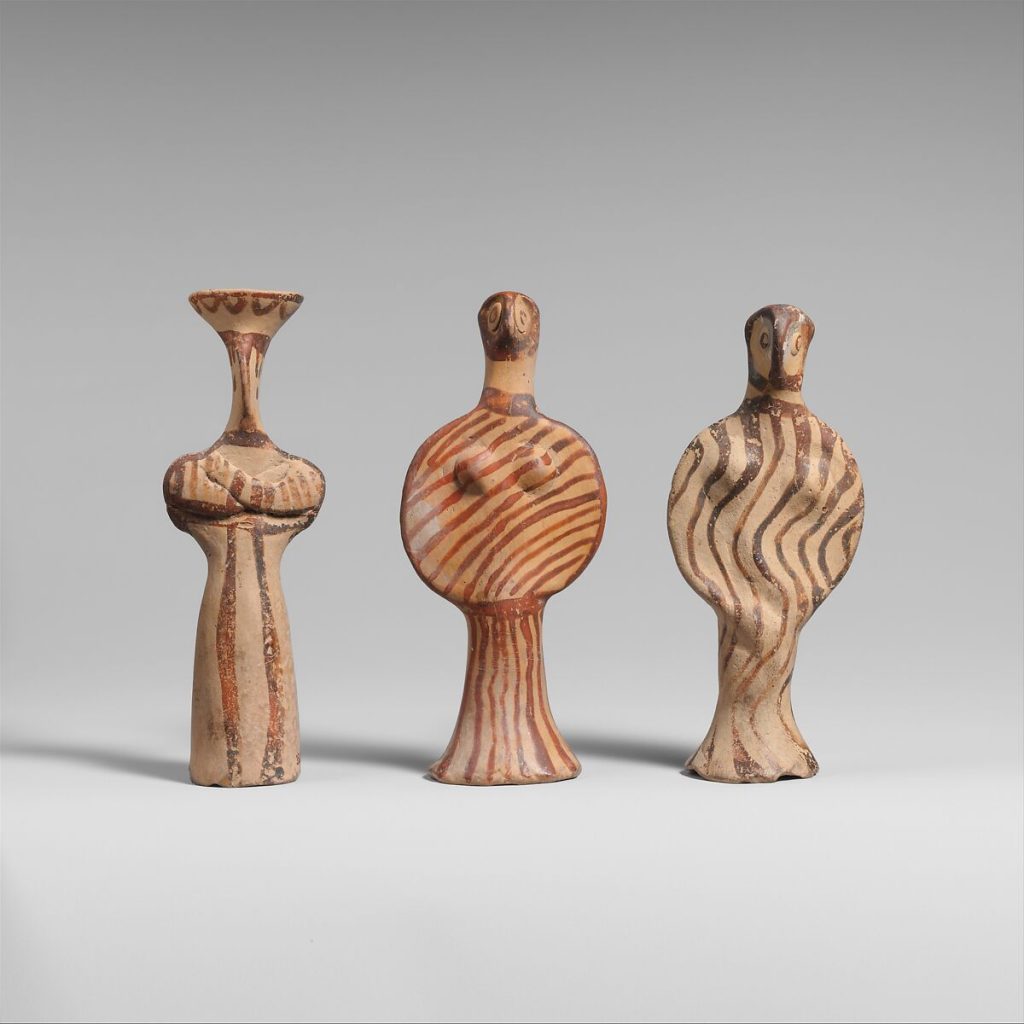Tsuktiben Jamir
The term “Helladic” is used to describe the Early, Middle, and Late Helladic ceramic (pottery) phases that existed in mainland Greece (3000 BC to 1050 BC). The ‘Phi’ Type Mycenaean figurines originated in Mycenaean Greece between 1450 and 1100 BC (Late Helladic IIIA). They got their name due to their shape, which resembled the Greek letter phi (Φ). Other types were also found and were called tau and psi, due to their likeness in shape to those Greek letters. They were discovered in tombs, kid’s graves, shrines, and settlement areas and were made of terracotta. These Mycenaean terracotta figures had a common theme of women’s sculptures that included breasts which are covered in encompassing garments. Although it has been suggested that their purposes changed depending on the context in which they were discovered, the purposes of these Mycenaean Female Figurines remain mostly unknown. It has been speculated that they had their uses as children’s toys, votive figures, and burial gifts, based on the manner in which they were excavated.
Some of these Helladic figurines are on view at the Met Museum in New York in Gallery 151. Some of the phi figurines on display have circular bodies that are entirely covered in painted wavy lines, possibly denoting drapery folds. Although the arms haven’t been given much detail and are little more than bulges hanging down at the sides, the breasts are clearly visible. The eyes are added as separate clay slips, and the face is pinched. They typically dress in a long, cloying garment, possibly a robe, and wear their long hair in a plait or “ponytail,” with a few stray strands falling over their forehead. They are usually found wearing necklaces and polos, a tall headgear thought to be worn by gods.

Courtesy: The Met

Courtesy: The Met.
Among the figurines on display, we also see a tau-type figure that has a typical hollow, columnar stem, but the head is enlarged relative to the body. The figure, as we notice is high-waisted and has arms that are elegantly wrapped over the breasts and are shown as single-applied strips of clay. This figure also wears a long garment, but unlike the other phi figurines, it is just minimally embellished with two vertical lines running down the front and back. The hairstyle of the figure is particularly distinctive, including a plait that extends from the top of the headpiece to the back of the neck. Under the edge of an intricately decorated polo, a fringe of hair is visible.
These Mycenaean figures have been found along with Mycenaean pottery and appear to have been important in the development of the Mycenaean society and religion. Ancient sites including graves, towns, and shrines have yielded more than 500 of similar figurines.
The Mycenaean period, which lasted from around 1600 BC to 1100 BC, was the last stage of the Bronze Age in Greece. With its palatial palaces, it served as a symbol of mainland Greece’s first advanced civilization. The end of the Bronze Age in the eastern Mediterranean coincided with the extinction of Mycenaean Greece, which was followed by the Greek Dark Ages, a time of transition into Archaic Greece. It is a wonder for us to be able to peek into their lives through the remains such as these figurines, and really makes us wonder about the humans’ journey throughout history.





